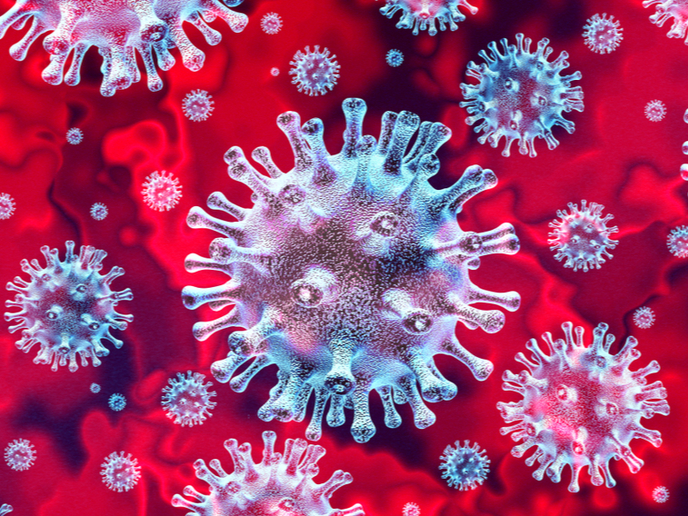Finding common vulnerabilities in the world’s three lethal coronaviruses
In the last two decades, the world has had to deal with three deadly human coronaviruses: SARS-CoV-1, MERS-CoV and the recent SARS-CoV-2. Before the diseases caused by these viruses emerged, human coronaviruses had mostly been linked to mild respiratory illness. Today, the rising death toll of the COVID-19 pandemic has led to global efforts to develop new vaccines and treatments. However, there is still no definitive cure for COVID-19 and if the SARS-CoV-2 virus continues to evolve, it could make finding an effective treatment even more difficult. The 3 lethal coronaviruses have been the focus of a study conducted by an international team of nearly 200 researchers from 44 academic and corporate institutions in France, Germany, Italy, the United Kingdom and the United States. The research team investigated SARS-CoV-2, SARS-CoV-1 and MERS-CoV in order to identify the molecular mechanisms of the coronavirus family as well as promising drug targets for broad coronavirus inhibitors. “This far-reaching international study elucidates for the first time commonalities and, importantly, vulnerabilities, across coronaviruses, including our current challenge with the SARS-CoV-2 pandemic,” observed lead investigator Nevan Krogan of the University of California’s Quantitative Biosciences Institute in a press release posted on the ‘Associated Press’ website. The study’s findings are explained in an article published in the journal ‘Science’.
Research approaches
To provide a holistic view of how SARS-CoV-2 and other coronaviruses interact with infected host cells, the research team used proteomics, cell biology, virology, genetics, structural biology, biochemistry, and clinical and genomic information. Expanding on their map of virus-host protein interactions for SARS-CoV-2, the scientists mapped the complete interactome – the whole set of molecular interactions – of SARS-CoV-1 and MERS-CoV. The cellular localisation of individually expressed coronavirus proteins was also assessed to gain vital information on their function. Functional genetic screening was then used to identify host proteins that can prevent the coronaviruses from spreading inside the human body. The proteins identified include the mitochondrial outer membrane protein Tom70 that interacts with the SARS-CoV-1 and SARS-CoV-2 protein Orf9b. The researchers used medical billing data to identify 738 933 COVID-19 patients. They then combined these records and patients’ genetic data with genetically validated host factors to find important molecular mechanisms and potentially promising drug treatments. “These analyses demonstrate how biological and molecular information are translated into real-world implications for the treatment of COVID-19 and other viral diseases,” stated co-author Pedro Beltrao of the European Molecular Biology Laboratory’s European Bioinformatics Institute. “By looking across the species, we have the capability to predict pan-coronavirus therapeutics that may be effective in treating the current pandemic, which we believe will also offer therapeutic promise for a future coronavirus as well,” continued Beltrao, whose previous work, supported by the EU-funded PhosFunc project, has fed into the current study. Another co-author of this study whose earlier related research received EU backing is Institut Pasteur researcher Marco Vignuzzi, who was principal investigator for the EU-funded RNAVIRUSPOPDIVNVAX and 1toStopVax projects. RNAVIRUSPOPDIVNVAX (RNA virus population diversity, virulence, attenuation and vaccine development) used deep sequencing and computational approaches to monitor viral evolution. The 1toStopVax (RNA virus attenuation by altering mutational robustness) project conducted proof-of-concept studies on their non-empirical method of attenuating RNA viruses. PhosFunc (Dissecting the functional importance of eukaryotic protein phosphorylation) developed genetic approaches to study the functional relevance of phosphorylation in yeast. For more information, please see: RNAVIRUSPOPDIVNVAX project 1toStopVax project PhosFunc project
Keywords
RNAVIRUSPOPDIVNVAX, 1toStopVax, PhosFunc, SARS-CoV-2, coronavirus, COVID-19



